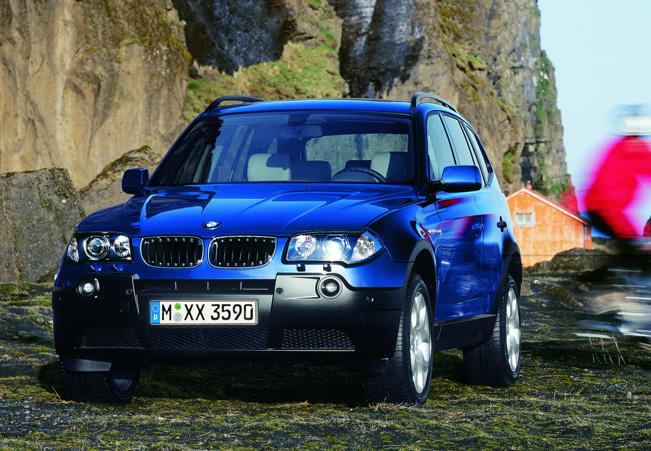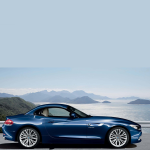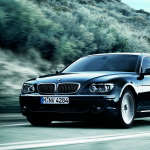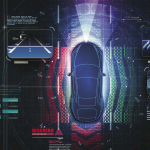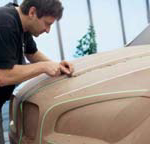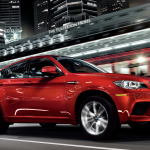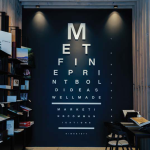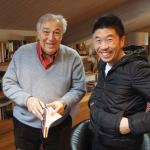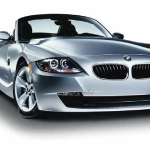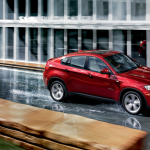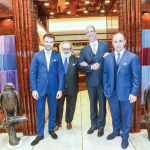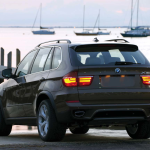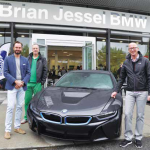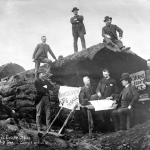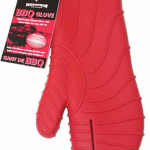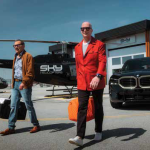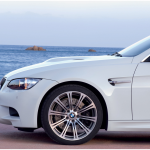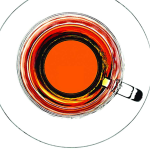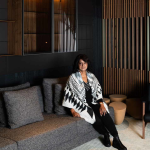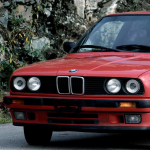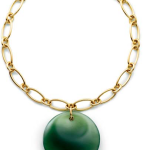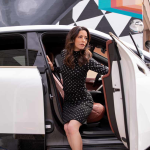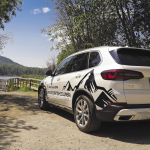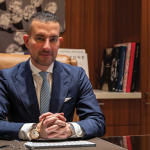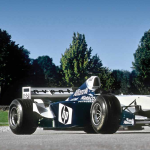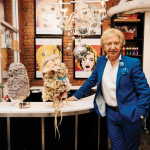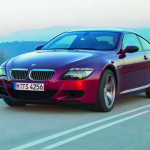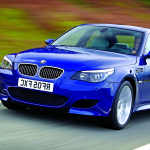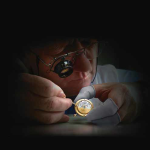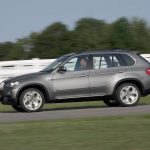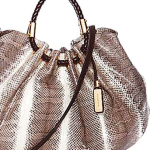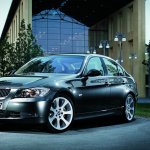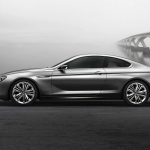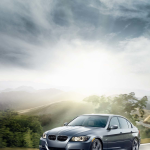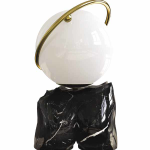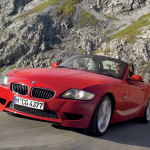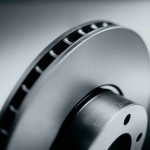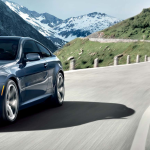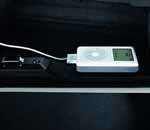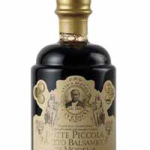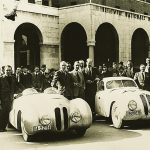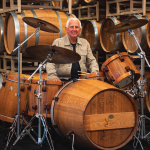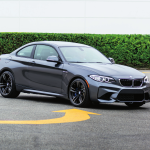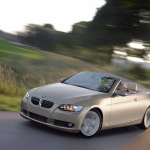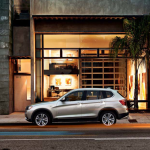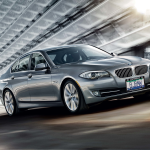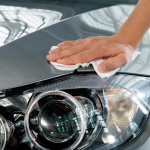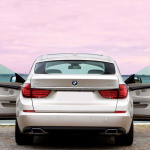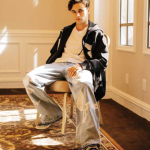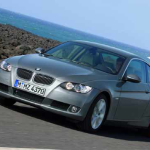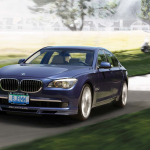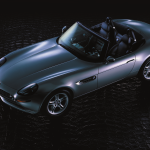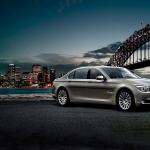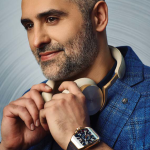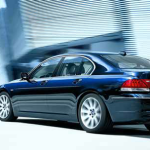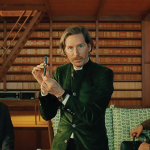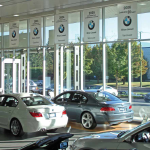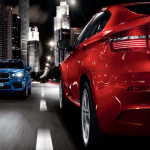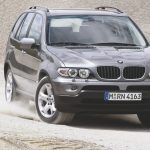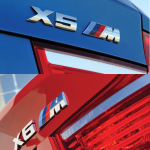
You don’t have to be a car buff or even a fan of the famed Bavarian marque to sense that BMW has been going through a significant “design revolution” in recent times. There’s something quite fresh and innovative about the current crop of BMW products at every level, a look that retains the traditional touches of old, yet embraces an altogether different styling approach. Every model is instantly recognizable as a BMW, and yet there are elements of design that place the cars in a new styling category, one that somehow combines art with practicality.
Much of this new look has been due to the influence of one man, the remarkable Chris Bangle, an American who heads the design department at BMW. Bangle has probably achieved more in his fairly short span at the famed automaker than many others have in decades—but not without a tinge of controversy. Even his critics have to agree that Bangle is a design genius and geniuses in the auto industry—as just about everywhere else—are often misunderstood. Sometimes the battle against conservatism and a philosophy of “let’s leave it the way it is” can be hard-fought, but Bangle’s work has proven itself in the most demanding arena of all, that of sales, customer satisfaction and the all-important bottom line.
When I first met Chris Bangle I sat with him in a car featuring a prototype of the company’s remarkable iDrive system which can handle multiple vehicle functions with one large, console-mounted knob. The way he explained it all to me revealed something of his ability to convince upper management of the need for change. He’s a no-nonsense communicator with plenty of hands-on savvy and 20 years of automotive design behind him. You get the impression that he wouldn’t have too much patience with
Sponsored Ads

fools, a useful asset in any major industry. I came away with the notion that iDrive was the best automotive computer interface ever developed and it’s still an amazing piece of technology by any standard. Chris Bangle attended the University of Wyoming and earned a bachelor of science degree from the famed Art Center College of Design in Pasadena, California. The Pasadena Art Center has nurtured distinguished designers all over the auto industry in North America and overseas. Bangle is currently Chief of Design in the Development Division of BMW AG in Munich, where he lives with his wife and son. If the idea of an American heading up the design department of a German automaker seems unusual it’s worth noting that vehicle design is very much an international business. The design supremos at both Ford and DaimlerChrysler are both from the U.K., as is one of the top stylists at Nissan. Key elements of the design function at General Motors are presided over by a French woman and legendary Italian auto design studio Pininfarina has a design director of Japanese origin. So having Bangle running things at BMW’s design studios is far from precedent-setting. Bangle is responsible for overseeing every aspect of BMW Group design on a global basis. It’s an awesome task, given that it involves a manufacturer with one of the most storied histories in the auto industry. He presides over every aspect of the corporation’s design including cars and sport activity vehicles, BMW motorcycles, BMW Motorsports, Mini cars and even Rolls-Royce prototypes and BMW Group lifestyle accessories. Bangle served a demanding apprenticeship in the automotive design field and gained experience in many parts of the world. Prior to joining BMW in 1992 he was director of Fiat Centro Stile/Design in Italy. Among other positions, he served Fiat as Head of Exterior Design and Head of
Exterior Studio. Earlier, he worked for GM subsidiary Adam Opel AG as an interior designer and was Deputy Head of Interior Design. Between 1978 and 1981, Bangle was an assistant designer at Hartkopf Associates. In addition to his leading role at BMW in Munich, Bangle is a member of the Board of Directors of DesignworksUSA, a wholly-owned BMW subsidiary located in California. This increasingly important BMW unit is an internationally recognized design firm capable of styling and modeling precision consumer products, full-size vehicles and even trains and aircraft. Bangle is clearly proud of the huge potential of DesignworksUSA. In California, the approach is to use “crossover” skills to solve a variety of client problems. Says Bangle: “I truly believe that the combination of DesignworksUSA and BMW Group Design is unique in the world. Although some name brand-car studios may dabble in industrial design, none have the depth of experience and the broad set of skills that DesignworksUSA brings to the table. Plus, of course, that special touch of BMW design quality.” While industrial design capabilities do complement the work of BMW’s main design functions very well indeed, it’s the automobiles which provide the most striking indication of the talents of Chris Bangle and his team. Bangle’s design evolution at BMW started with the 7-Series, continued with the Z4, 5-Series, X3 and 6-Series and extended to the most recent model from Munich, the new 3-Series. Even a brief look at recent BMW products and their design cues will reveal something of his achievements and point the way to what BMW buyers may expect in the future. Bangle was also involved with the new 1-Series small car, which is not currently sold in North America and will thus not be covered in this review of his designs.
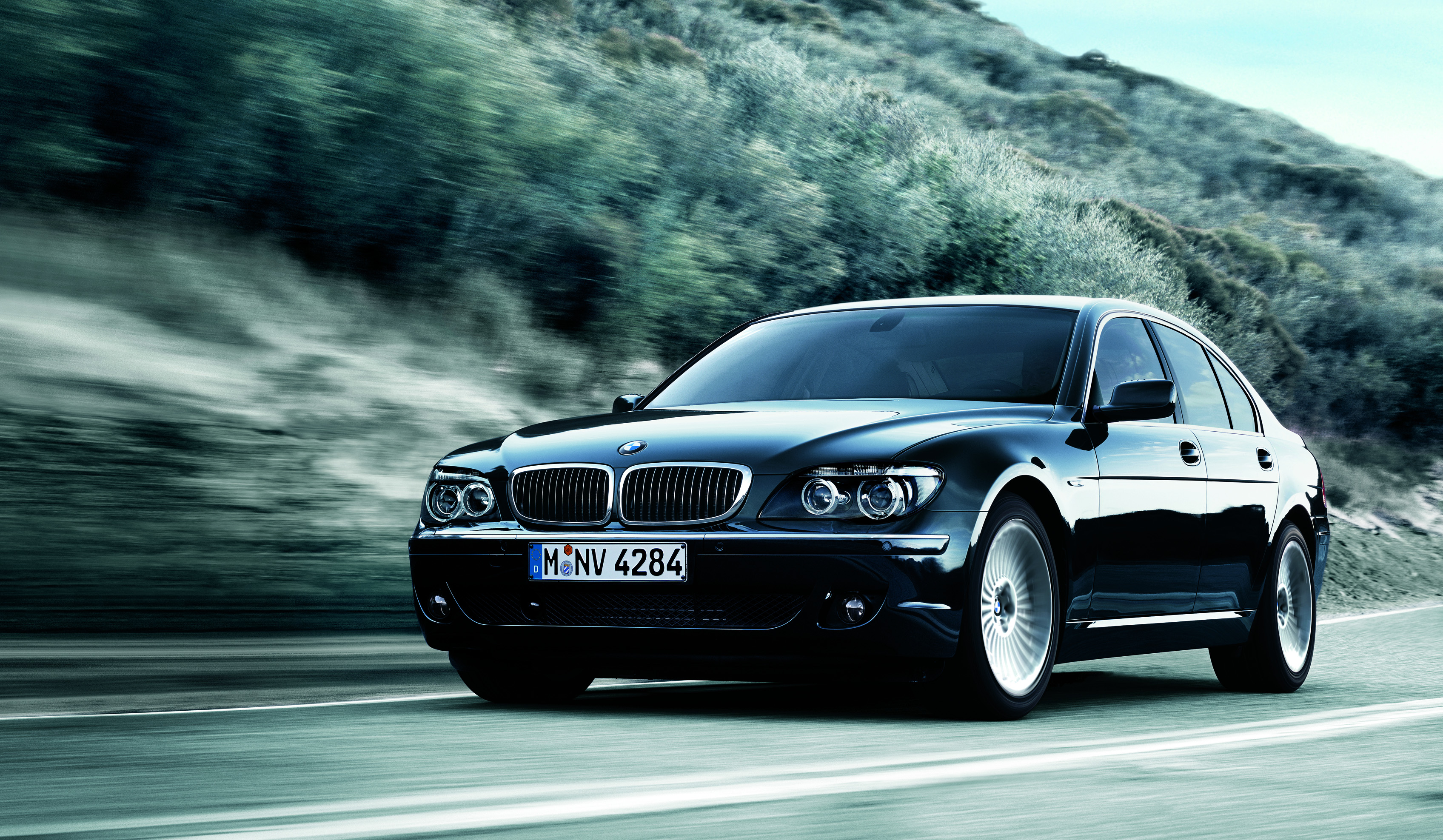
The 7-Series sedan is BMW’s flagship and created a sensation when it was introduced, mostly thanks to its departure from the styling norm. The car is very much a presence on the road and combines great prestige with extensive technical competence. Bangle styling cues include a curvaceous trunk design, contributing to cargo capacity golfers will love, and neat “BMW signature” nose treatment. Roomy, silky-smooth and luxurious, the current 7-Series is widely favoured by people who want a large sedan with unmatched style, safety and
technology. Bangle describes the car as “dynamic and sporty to drive.” It’s a handsome automobile, and like large BMWs before it, drives like a much smaller car, the ultimate aim of all full-size sedan producers, though one not often achieved. The Z4, the second generation of this series of BMW sports roadsters, is more a piece of sculpture than an automobile. With its deeply scalloped sides, radical though highly recognizable nose treatment and stubby trunk, the car could never be taken for anything else but a BMW sportster. With this model, Bangle and his design team again headed in new directions, taking styling inspiration from no other automaker.
The interior is no less interesting than the bodywork and includes imaginative use of unusual and attractive materials to set the car apart from rivals in this class. The Z4 is an exciting and unique sportster that has great character. The Bangle influences are perhaps clearer in this car than in any other BMW. In recent years, we’ve seen a welcome boom in the availability of premium roadsters and BMW was at the very forefront of this trend. The BMW 5-Series, the company’s entry in the mid-size luxury segment, takes the philosophy explored with the 7-Series a stage further.
Again, there’s very much a sculptured look to the car with compound curves everywhere, all uniting to create a highly modernistic appearance with hints of past BMW glories. 5-Series styling highlights include a trunk line similar to that of the 7-Series and a curvaceous set of headlights flanking the trademark BMW “kidney-shaped” grille. Like the 7-Series, the “five” is agile for its size and it’s easy for a driver to believe he or she is driving a much smaller car. There are also station wagons “Touring” is BMW’s term—and the magnificent M5 high-performance version with its 500-plus horsepower.
The X3 sport utility vehicle is a clever move to bring many of the qualities of the larger and more expensive X5 to a wider audience. Described by some automotive critics as “an SUV with the heart and soul of a 3-Series,” the X3 is an innovative piece of styling that brings much of the ambiance of the X5 to a smaller product while retaining a character of its own. The X3 is a lot more than simply a smaller X5, as close examination shows. Once again, there’s a hint of sculpturing to the body and, no surprise here, a traditional BMW grille, though with advanced lighting common to all
Sponsored Ads
the automaker’s products. The interior is, perhaps, a little more contemporary than that of the X5, possibly indicating a desire to appeal to younger buyers who may find the opulence of the X5 a little more than they need. The return of the 6-Series was much celebrated by BMW fans with strong memories of those wonderful coupes of the 1960s and 1970s, he outstanding 3.0-litre CSL, 635CSi and M6. With the new series, Chris Bangle and BMW set out to capture some of the essence of those great cars and to add contemporary styling and advanced technology.
The new 645Ci (available in coupe and convertible form) is, as BMW puts it: “Full of style and presence with character lines flowing smoothly round the car without a definite beginning or end, joining the front, side and rear to form one complete, harmonious sculpture.” One glance at the car and few would disagree with this view of the 6-Series’ looks. There are certainly echoes of the past in the way the new car was styled by the Bangle team, but there’s a brawnier, more performance-oriented approach too.
Inside there’s an interesting combination of high technology and restrained design, what the Bangle team calls “dynamic harmony.” The Bangle signatures are there, certainly, but the car stands alone in the BMW lineup as a very special four passenger luxury sports car. When BMW describes this car as “powerful, exciting and emotional” it’s no more than a reflection of the truth. The recently arrived 2006 3-Series is possibly the most subtle interpretation yet of Bangle’s influence on the cars.
The 3-Series has long been the world’s top-selling luxury sports sedan, an achievement rival automakers can only dream about. Unquestionably, this is a key product for BMW for a variety of reasons, not least because of the model’s many years of critical success. Not too many automobiles make it much beyond two or three model cycles. Times —and tastes—change, and often an automaker that enjoys great success with a new model subsequently finds that sales droop after a couple of upgrades.
This common scenario makes it all the more worthwhile to celebrate 30 years of production for the BMW 3-Series. Not only did the 3-Series help to get a then-struggling BMW back on its feet three decades ago, but sales of the model have never been stronger than they are today. It could be argued that the 3-Series actually jump-started the sports sedan market back in 1975 and for that historic 30 years, it’s been the benchmark in one of the hottest classes in the entire auto industry.
It’s quite an achievement for BMW to stay on top of the sports sedan/entry level luxury segment for so long and an endorsement of the fact that creative engineering and styling, coupled with high quality and marketing savvy, can pay dividends. Many automotive journalists (me included) thought the old model was as good as a car in this segment could get but, of course, BMW has made the new one better while retaining all the great features of the superseded model.
Will the 3-Series still be around after another 30 years have slipped by? I think you can count on it. The new car features influences from the 7-Series, 5-Series and even the Z4 but it’s very much a stand-alone piece of individualistic design. It boasts a ground-hugging, purposeful look, though the nose does echo some 5-Series cues. Its flared wheel arches and muscular look reinforce the “sports sedan” image the car has always had. As Bangle’s team at BMW points out, the car is “a strong expression of concept harmony with unique character and a clear family resemblance,” adding that the car was designed to be “thrilling to behold.”
Aimed at being more sporting than the 5-Series and more elegant than the Z4, the 3-Series crosses many automotive barriers and can be considered either an elegant small luxury sedan or a very performance-oriented sportster. The choice is entirely up to the buyer. The car is slightly larger than its predecessor but remains very nimble and agile when the roads get twisty. BMW points out that the long-lived 3-Series has tended to advance model-by-model in small steps, but the new car is “a design leap into the future.”
Even so, the car is not too “gee whiz” radical, something that buyers in this class will likely appreciate. Speaking recently to the respected industry publication Automotive

exciting and emotional” it’s no more than a reflection of the truth. The recently arrived 2006 3-Series is possibly the most subtle interpretation yet of Bangle’s influence on the cars. The 3-Series has long been the world’s top-selling luxury sports sedan, an achievement rival automakers can only dream about. Unquestionably, this is a key product for BMW for a variety of reasons, not least because of the model’s many years of critical success. Not too many automobiles make it much beyond two or three model cycles. Times —and tastes—change, and often an automaker that enjoys great success with a new model subsequently finds that sales droop after a couple of upgrades. This common scenario makes it all the more worthwhile to celebrate 30 years of production for the BMW 3-Series.
Not only did the 3-Series help to get a then-struggling BMW back on its feet three decades ago, but sales of the model have never been stronger than they are today. It could be argued that the 3-Series actually jump-started the sports sedan market back in 1975 and for that historic 30 years, it’s been the benchmark in one of the hottest classes in the entire auto industry. It’s quite an achievement for BMW to stay on top of the sports sedan/entry level luxury segment for so long and an endorsement of the fact that creative engineering and styling, coupled with high quality and marketing savvy, can pay dividends.
Many automotive journalists (me included) thought the old model was as good as a car in this segment could get but, of course, BMW has made the new one better while retaining all the great features of the superseded model.
Will the 3-Series still be around after another 30 years have slipped by? I think you can count on it. The new car features influences from the 7-Series, 5-Series and even the Z4 but it’s very much a stand-alone piece of individualistic design. It boasts a ground-hugging, purposeful look, though the nose does echo some 5-Series cues.
Its flared wheel arches and muscular look reinforce the “sports sedan” image the car has always had. As Bangle’s team at BMW points out, the car is “a strong expression of concept harmony with unique character and a clear family resemblance,” adding that the car was designed to be “thrilling to behold.” Aimed at being more sporting than the 5-Series and more elegant than the Z4, the 3-Series crosses many automotive barriers and can be considered either an elegant small luxury sedan or a very performance-oriented sportster. The choice is entirely up to the buyer.
The car is slightly larger than its predecessor but remains very nimble and agile when the roads get twisty. BMW points out that the long-lived 3-Series has tended to advance model-by-model in small steps, but the new car is “a design leap into the future.” Even so, the car is not too “gee whiz” radical, something that buyers in this class will likely appreciate. Speaking recently to the respected industry publication Automotive


